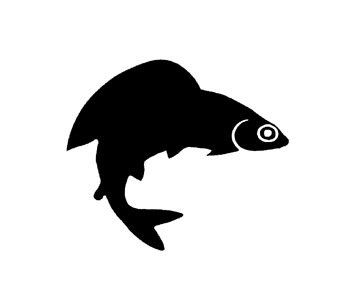Site built with:
PhD study
Assessing adaptive genetic variation for effective management and conservation of European grayling.
By Vanessa Huml
I have recently begun a PhD on the topic “Assessing adaptive genetic variation for effective management and conservation of European Grayling” funded jointly by Manchester Metropolitan University
and The Grayling Research Trust and also working in collaboration with staff at University East Anglia, Plymouth University
and Cyfoeth Naturiol Cymru
(Natural Resources Wales). Previous work funded by the GRT and conducted at Bangor University
(with Dr Martin Taylor, now at UEA) allowed a genetic census of grayling populations throughout the UK. Grayling from 27 rivers were sampled. Populations showed high genetic differentiation and could be mainly grouped into four geographic areas of origin1. Where grayling occur in introduced populations, their source population can be reconstructed based on their genetic profile as a result of this work.
To assess adaptive variation in this subsequent study, functionally important genes of the immune system will be assessed, taking advantage of new sequencing technologies. Genetic variation at functional sites of the genome has an adaptive value if it is a result from different selection pressures, like varying bacterial communities in space or time where distinct gene variants have an advantage. Therefore genetic variation will be compared to variation in bacterial diversity and other environmental characteristics like water temperature and quality to determine how these parameters influence the process of adaptation.
To understand how functional genetic variation is shaped and maintained within natural populations has a great value for effective conservation for two main reasons. First, the potential of a species to adapt to a changing environment is crucial for its persistence2 especially in the context of climate change and other ecosystem alterations due to human activities that are rapidly taking place3. To identify where demographic constraints like low population sizes or environmental stress4 prevent a population from responding to environmental changes is therefore helpful to improve conditions. Second, locally distinct adaptations are important to be taken into account when management strategies like stocking come into practice to enhance the probability of survival of introduced fish and to avoid counterproductive effects if maladapted introduced fish mix with native stocks5.
Overall I hope this study will contribute to a better understanding of how UK populations of grayling cope with evolutionary challenges and to implement this knowledge in improved management plans.
At the moment, I am at the stage of planning sampling for the 2014 and 2014/15 seasons, as well as conducting early genetic work in the lab. Although the 2014 winter grayling season is well underway, if you feel you are able to contribute samples to the project, please contact me at the address below. Samples will also be required during the summertime and again in the following winter. Sampling involves taking a swab of the mouth and gills of fish that have been caught by anglers. An estimate of fork length and condition of the fish would also be useful, as well as a record of the date and geographic location. More details can be provided on request. If you are interested in contributing to the project, please don’t hesitate to get in touch.
I look forward to updating GRT and The Grayling Society members regarding progress as the project proceeds.
References
1. Dawnay, N., Dawnay, L., Hughes, R. N., Cove, R. & Taylor, M. I. Substantial genetic structure among stocked and native populations of the European grayling (Thymallus thymallus, Salmonidae) in the United Kingdom. Conserv. Genet. 12, 731–744 (2011).
2. Lande, R. & Shannon, S. The role of genetic variation in adaptation and population persistence in a changing environment. Evolution 50, 434+ (1996).
3. Pertoldi, C., Bijlsma, R. & Loeschcke, V. Conservation genetics in a globally changing environment: present problems, paradoxes and future challenges. Biodivers. Conserv. 16, 4147–4163 (2007).
4. Frankham, R. Stress and adaptation in conservation genetics. J. Evol. Biol. 18, 750–755 (2005).
5. Einum, S. & Fleming, I. A. Implications of stocking: ecological interactions between wild and released salmonids. Nord. J. Freshw. Res. 56–70 (2001).


